This is a cutaway drawing of the proposed structure of Ganymede's interior.
Click on image for full size
NASA
Differentiation
Differentiation is a scientific term which really means "to separate". In their earliest history, elements which made the planets would part into separate regions, if the planet were warm enough. This is the akin to the process whereby an oil & vinegar salad dressing will part into regions made only of oil and only of vinegar.
Planetary elements which separate include iron, which is heavy and silicate rock, which is lighter. Iron falls to the center of a planet and forms a core, silicate material stays in the middle, ice stays near the top, as shown in this drawing of the moon Ganymede.
Earth/Mars are examples of planets which did/did not differentiate early in their histories. Ganymede/Callisto are examples of moons which did/did not differentiate early in their histories. The lack of differentiation may say something about how warm these planets were to start with.
You might also be interested in:
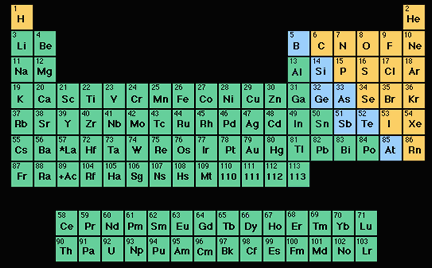
An element (also called a "chemical element") is a substance made up entirely of atoms having the same atomic number; that is, all of the atoms have the same number of protons. Hydrogen, helium, oxygen,
...more
Minerals are the building blocks of rocks. There are many different types of minerals. All of them are solid and all are made of atoms of elements. Minerals can grow even though they are not alive. Most
...more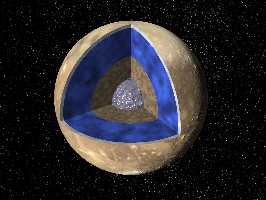
Also, prior to the official "beginning" of the Earth or start of the Archean age, the Earth turned inside out! That's right. Iron is heavy. As soon as the Earth became warm enough, the heavy iron which
...more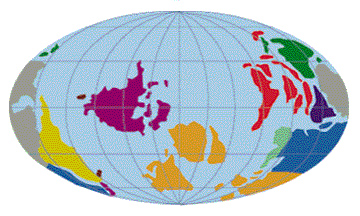
The Archean is the name of the age which began with the forming Earth. This period of Earth's history lasted a long time, 2.8 billion years! That is more than half the expected age of the Earth! And no
...more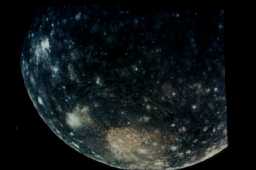
Measurements by the Galileo spacecraft have been shown that Callisto is the same inside from the center to the surface. This means that Callisto does not have a core at the center. This means that, unlike
...more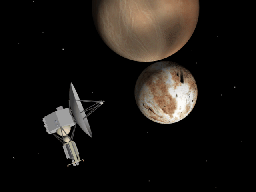
AU stands for Astronomical Units. It is an easy way to measure large distances in space. It is the distance between the Earth and the Sun, which is about 93 million miles. For really big distances, we
...more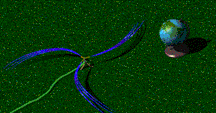
The solar wind is formed as the Sun's top layer blows off into space. It carries magnetic fields still attached to the Sun. Streams appear to flow into space as if they are spiraling out from the Sun,
...more














